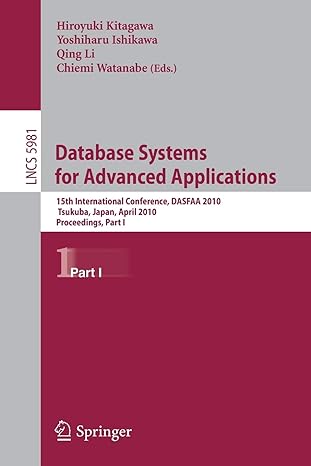Question
CRITICAL THINKING Fill in the blanks to complete the following proof. Some of the blanks may be conclusions. In that case place one of our
CRITICAL THINKING
Fill in the blanks to complete the following proof.
Some of the blanks may be conclusions. In that case place one of our ASCII-alternate propositional logic symbols (some of which are more than one keyboard stroke) in each blank, and do not add any space before, after, or between your keyboard strokes. Use the following symbols.
tilde: ~
dot: . (that's a period)
wedge: v (that's a lowercase vee "v")
horseshoe: -> (that's a dash followed by a right corner bracket)
triple bar: <-> (that's a left corner bracket, followed by a dash, followed by a right corner bracket
In other cases, the blank is a rule. Fill in the blank with the full name of the rule or the abbreviation from the book. Other abbreviations will be marked wrong.
1. A -> (B -> ~ C)
2. D -> (A . C)
3. A -> (~~ C -> ~B) 1,_________________
4. A -> (C -> ~ B) 3,___________________
5. (A . C) -> ~B 4, ___________________
6. __________ __________ ____________ __________ 2,5, HS
Complete the proof with the given assumptions, using any combination of the 18 rules of inference.
1. (A v D) -> (B v C)
2. A
3. ~ B /prove C
Complete the proof with the given assumptions, using any combination of the 18 rules of inference.
1. (A -> (B -> C)) . (~B -> D)
2. (A . B) v ~ B
3. ~ C /prove D
Step by Step Solution
There are 3 Steps involved in it
Step: 1

Get Instant Access to Expert-Tailored Solutions
See step-by-step solutions with expert insights and AI powered tools for academic success
Step: 2

Step: 3

Ace Your Homework with AI
Get the answers you need in no time with our AI-driven, step-by-step assistance
Get Started


